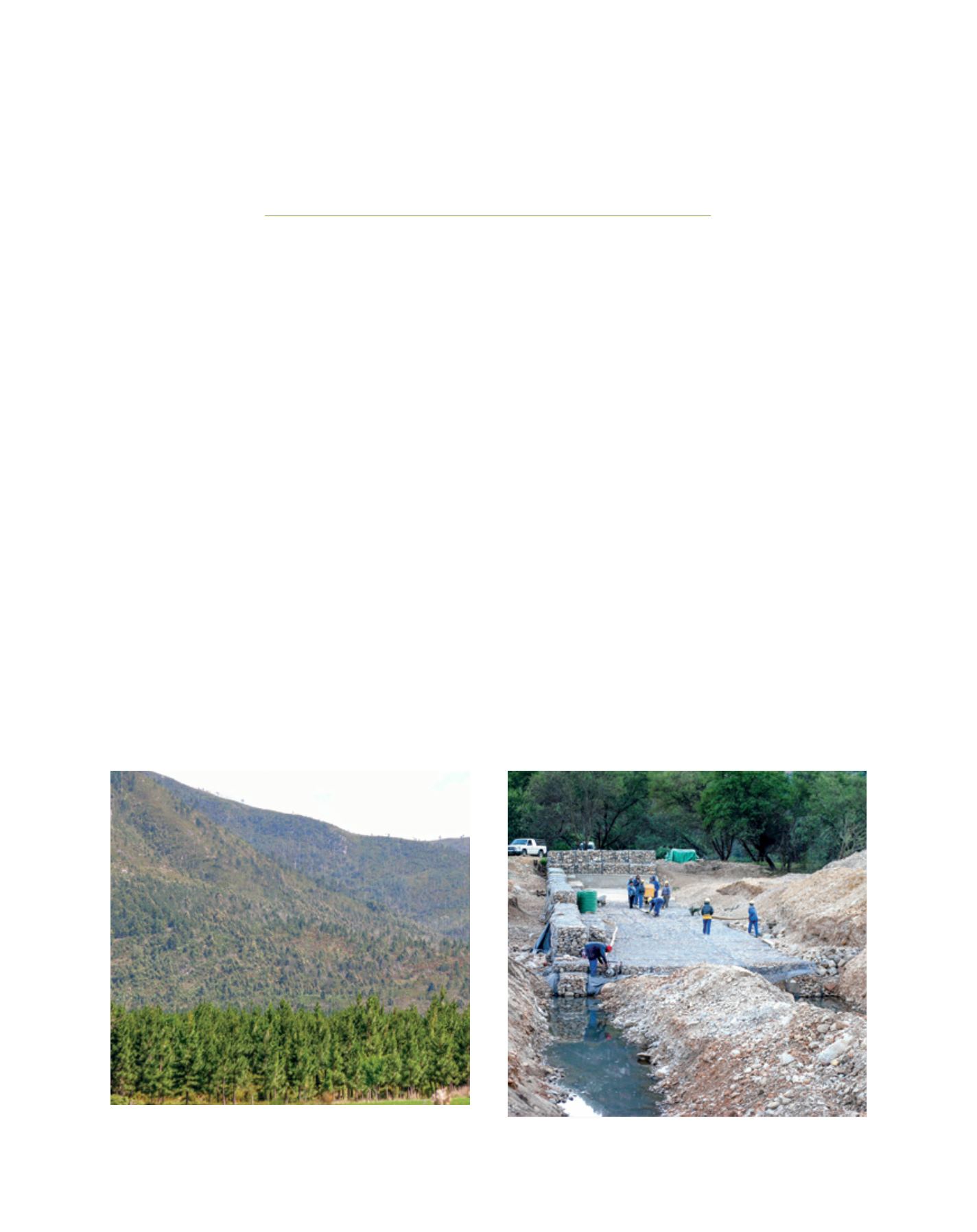

[
] 51
Securing the upper end of the water
value chain in South Africa
Christo Marais, Chief Director, Natural Resource Management Programmes,
Department of Environmental Affairs, South Africa
O
n 30 November 1993 a group of researchers,
planners and natural resource managers met to
discuss the impacts of invasive alien plants on
water resources and biodiversity in the Fynbos Biome, or
Cape Floristic Region, the smallest of the world’s six plant
kingdoms. Two resolutions were made at the meeting: to
present to local decision-makers the threat that invasive
alien plants pose to the country’s scarce water resources
(the initiative that developed into the ‘Working for …’
programmes); and to approach ‘the rich north’ for support
in the battle against invasive alien plants and their
impacts on biodiversity. The latter is the forerunner to the
landscape planning programme, Cape Action for People
and the Environment and later programmes funded by the
Global Environmental Facility of the World Bank.
Hydrological research going back as far as 1943, when
Professor C. L. Wicth published the first scientific papers
showing that
Pinus
plantations have a negative impact on
streamflow, provided the initial rationale for the clearing of
invasive alien plants. This was confirmed by further research
between the 1960s and 1980s
1,2
. The idea of also creating
jobs while containing the spread of invasive alien plants to
improve water security was presented to the late Professor
Kader Asmal, the then Minister of Water Affairs and Forestry,
in June 1995. In October 1995 the Working for Water (WfW)
programme was launched by Professor Asmal, a multide-
partmental programme with a budget of US$6.9 million
(R25 million based on the exchange rate at the time). The
programme has since seen phenomenal growth, with a budget
increasing to US$1,317.3 million (around R9.88 billion based
on the mean exchange rate for 1995-2015) and peaking with
an expenditure of US$105.3 million (R1.263 billion) during
2014/15, while also giving part-time employment opportuni-
ties to more than 40,000 people over the last few years.
Initially the primary focus of WfW was on the management
of invasive species known to have negative impacts on stream-
flow. It was soon realized, though, that WfW cannot operate
in isolation. When invasive alien plants are cleared from
riparian zones and wetlands there is still the imperative for
restoration of the wetland to improve water purification and
retention, and ultimately to improve dry season flows. In 2004
the Working for Wetlands (WfWet) programme, initially run
as a sub-programme of WfW and implemented by the South
Workers restoring a highly degraded wetland in the Baviaanskloof
Pinus species invading the Southern Cape Mountains where 8 per cent of
streamflow is lost due to invasive alien trees
Image: Christo Marais
Image: Christo Marais
L
iving
L
and
















